|
| Non- humic substances characteristics |
|
| Soil carbohydrates |
| |
| Carbohydrates consitute 5 to 25% of the organic matter in most soils. Plant remains
contribute carbohydrates in the form of simple sugars, hemicellulose, and cellulose, but these are more or less decomposed by bacteria, actinomycetes and fungi, which in turn synthesize polysaccharides and other carbohydrates of their own. |
| |
| Signifcance of carbohydrates |
| |
| The significance of carbohydrates in soil aries largely from the ability of complex
polysaccharides to bind inorganic soil particles into stable aggregates. Carbohydrates also form complexes with metal ions, and they serve as building blocks for humus synthesis. Some sugars may stimulate seed germination and root elongation. Other soil properties affected by polysaccharides include cation exchange capacity (attributed to COOH groups of uronic acids) , anion retention (occurence of NH2 groups), and biological activity (energy source for microorganisms). |
| |
| The major groups of carbohydrates |
| They can be divided into 3 subclasses: |
| 1. Monosaccharides, which are aldehyde and ketone derivatives of the higher polyhydric alcohols. |
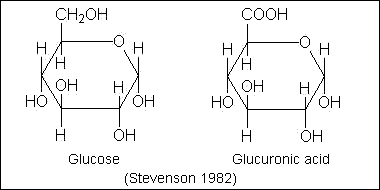 |
| 2.Oligosaccharides, a large group of polymeric carbohydrates consisting of a relatively few monosaccharide units. |
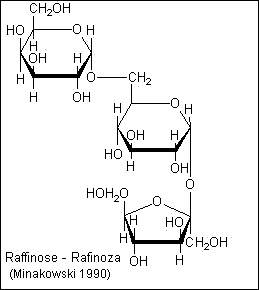 |
| 3.Polysaccharides- contain many monomeric units (8 or more) |
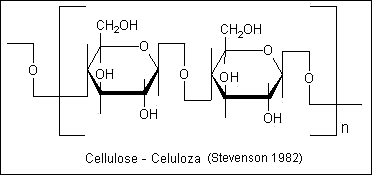 |
| |
| The carbohydrates material in soil occurs as: |
| |
- free sugars in the soil solution
- complex polysaccharides
- polymeric molecules of various sizes and shapes which are so strongly attached to clay and/or humic colloids.
|
| |
| The cotribution of individual sugar types to soil organic matter(Stevenson 1982) |
| |
| Sugar |
% of organic matter |
| Amino sugars |
2-6
|
| Uronic acids |
1-5
|
| Hexose sugars |
4-12
|
| Pentose sugars |
<5
|
| Cellulose |
to 15
|
| Others |
trace
|
|
| |
| Soil lipids |
| |
| The class of organic compounds designated as lipids represents a convenient anlytical
group rather than a specific type of compound. |
| |
| They represent a diverse group of materials ranging from relatively simple compounds
such as fatty acids to more complex substances such as the sterols, terpens, polynuclear hydrocarbons, chlorophyll, fats, waxes, and resins.The bulk of the soil lipids occurs as the so-called fats, waxes, resins. |
| |
| In normal aerobic soil the lipids probably exist largely as remnants of plant and microbial
tissues. |
| |
| From 2 to 6% of soil humus occurs as fats, waxes, resins. |
| |
| Lipids are physiologically active. Some compounds have a depressing effect on plant
growth whereas others act as growth hormones. Waxes and similar materials may be responsible for the water repellent condition of certain sands. |
| |
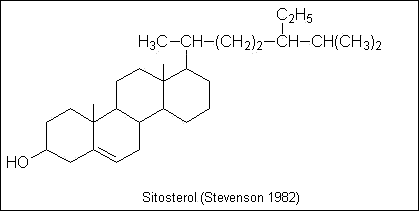 |
| |
| Amino acids |
| |
Amino acids exist in soil in several different forms, like:
- As free amino acids
- in the soil solution
- in soil micropores
- As amino acids, peptides or proteins bound to clay minerals
- on external surfaces
- on internal surfaces
- As amino acids, peptides or proteins bound to humic colloids
- H-bonding and van der Waals' forces
- in covalent linkage as quinoid-amino acid complexes
- As mucoproteins
- As a muramic acid
|
| |
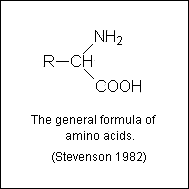 |
| |
| Amino acids, being readily decomposed by microorganisms, have only an ephemeral
existence in soil. Thus the amounts present in the soil solution at any one time represent a balance between synthesis and destruction by microorganisms. |
| |
| The free amino acids content of the soil is strongly influenced by weather conditions,
moisture status of the soil, type of plant and stage of growth, additions of organic residues, and cultural conditions. |
| |
